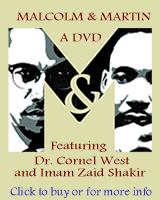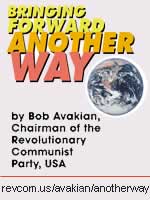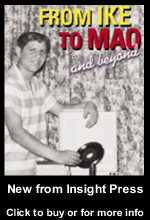
|
|||||||||||||||||||||
|
The current issue is always free to all readers If
you need the access available to a |
|
 |
|
|
Los Angeles recognized the 15th Anniversary of the nation’s largest (and worst) manmade disaster, the Los Angeles Civil Unrest, that occurred after four LAPD Officers were set free for the videotaped beating of Rodney King. If you are Black, it was a rebellion; if you are Korean (or a business owner of any race) it was a riot; if you are white—you were either victim or savior; if you are Latino, you were just there to make the most of the opportunity. Because the 1992 Los Angeles, unlike the Watts Riots that preceded it by some 27 years, was not a race riot per se, it was seen as a class riot, stemming from economic oppression and police suppression. If you were poor, jobless, homeless, or helpless against police abuse in 1992—the politics of subjugation came home to roost that year. It was followed by bold proclamations that Los Angeles would be rebuilt. The city even named the rebuilding effort, “Rebuild LA.” Like war veterans trying to recall their role in a war, there’s a whole lot of selective amnesia going on about what happened then and what’s happened since. It is the source of some intense debate. Like John Kerry’s swift boat rescue claim, the hero’s version of the rescue seems to be a bit fuzzier than those the hero claimed to rescue. Was Los Angeles really rebuilt? If you listen to some, yes—listen to others, or disbelieve your lying eyes, no. Like most disasters, an immediate response is where the most impact lies. As time subsides, everything somehow isn’t as bad as we recall. Only poverty disasters, like the L.A. Riots—like Katrina, are really worse than you can recall. Let’s understand 1992 in its truest context. 1992 was the year of a Presidential election, of major discontentment nationwide regarding the state of the nation’s economy and over the nation’s first manufactured war since Viet Nam, the 1991 Gulf War. “Reaganomics” had collapsed, interest rates were rising—as was unemployment. Urban cities were embroiled in unrest, not just in Los Angeles, but in New York and Miami, over the same issues as L.A.: economic subjugation, police suppression and gang violence. A voter revolt movement was taking place in the form of Ross Perot’s candidacy, and the nation was getting its first taste of the centrist politics that would become known as the Clinton years. The eight years to follow was the greatest economic boom in the nation’s history. It represented both the largest economic recovery since the depression and the biggest window of economic opportunity since Post-WWII industrialism. Remember, however, there was no internet as of yet, and cell phones were a luxury. There were no DVDs, flat screens TV, Ipods, or blue tooth technology. Computers required heavy lifting, and laptops were as big as a briefcase. Information was exclusive to the privileged and the poor were clueless as to the global evolutions taking place. The “flatting” of the world was taking place during this time. The world was ready to build on a whole ‘nother scale. Then Los Angeles burned down again.
Fifteen years hence, Los Angeles is being heralded as a world class city, and there were some things built in L.A. that had nothing to do with the riots—but were benefits from massive capital mobilization in the name of rebuilding the city. I participated in the bus tours that Operation HOPE held last week—a great source of inner conflict for me, but for the sake of unity in the community…but it doesn’t change what I know and what I see. The point of the tours was to show the “progress” that has occurred in South L.A. (what used to be South Central Los Angeles—it was renamed after the riots, as if people were not going to know where they were). I’ll be the first to say that there wasn’t much to see. The most significant stop on the tour was in Inglewood, which was impacted much by the riots, but whose urban revitalization is one of the most impressive in the nation (outside of Harlem). It’s the type of revitalization that should have occurred in L.A. We passed more vacant lots than new developments. And most of the rebuilding was low density, low economic impact, meaning the land was underdeveloped and job creation was marginal at best. What Operation HOPE lauded as a billion dollars of investment in South L.A. should have been ten billion. The point that no one wanted to talk about was that it was a billion dollars of investment to replace a billion dollars of destruction, that 15,000 jobs have left South L.A. since the 1992 riots, and here’s the kicker: during the same 15 years, 25 billion dollars of investment has been made in other parts of the city, including West L.A. and Hollywood (which was impacted by the riots in the same way South L.A. was).
We ended the tour at the biggest single investment in the inner city, West Angeles’ 60 million dollar “mega” church in South L.A. But it would have been interesting to take the tour past Staples Center (built in the post riot era), or the Skirball (post riot era), or the Grove (built by the former President of the Police Commission, responsible for a police reform that never occurred), or the new Disney Center, or the much expanded Koreatown, that went beyond rebuilding the same old constructs (strip malls, low to moderate income housing, churches). Other parts of the city built new multi-level, commercial/residential “Paseo-type” mixes, optimizing value and space. The Korean community is the truest example of post-rebuilding, where they replaced devastation with something much better—not replacing with the same thing that was there. Then there is the Hollywood redevelopment project, one of the largest in the nation, with the largest municipal subsidy ever. The look of Hollywood now and Hollywood 1992 is like night and day. South Los Angeles now and South Los Angeles 1992 is like night and night. In other words, you can’t tell the difference. In Inglewood, you can tell the difference. Culver City has its Bridge development. Carson has its new Home Depot Center. Even in Compton, you can tell there is a difference. In Downtown L.A., you can tell some difference. In South L.A., you can tell one difference. There are some 200 fewer liquor stores, as community advocacy (through a group called Community Coalition) stopped to renewal of liquor licenses. Many have been replaced by payday check cashiers. One form of predator replacing another. So we really didn’t see the rebuilt L.A. We saw the “replaced L.A.” We went looking for change in all the wrong places (again). But the city fathers knew where the change had really taken place. South L.A. had been (and is still being) “baited and switched.” L.A. was rebuilt better. South L.A. just replaced some of what was already there. South L.A. remains essentially the same, although all the world around it has changed for the better, and changed for the best—21st Century modernization.
The whole world has changed since 1992, and L.A. has changed since 1992…except for one part of the city, the one that is still most deprived and suppressed, South (Central) Los Angeles. All the smoke and mirrors in the world is not going to change that. Only real investment will change one of the saddest on-going living commentaries in the true politics of subjugation. BC Columnist Anthony Asadullah Samad, Ph.D., is a national columnist, managing director of the Urban Issues Forum (www.urbanissuesforum.com) and author of the upcoming book,Saving The Race: Empowerment Through Wisdom. He can be reached at www.AnthonySamad.com
|
|
| Home | |
| May
3, 2007 Issue 228 |
||||||||||||||
|
||||||||||||||
| Printer Friendly Version in resizeable plain text format | ||||||||||||||
|
|
||||||||||||||
 |
||||||||||||||
 |
||||||||||||||
 |
||||||||||||||
| |
||||||||||||||
| |
||||||||||||||




































